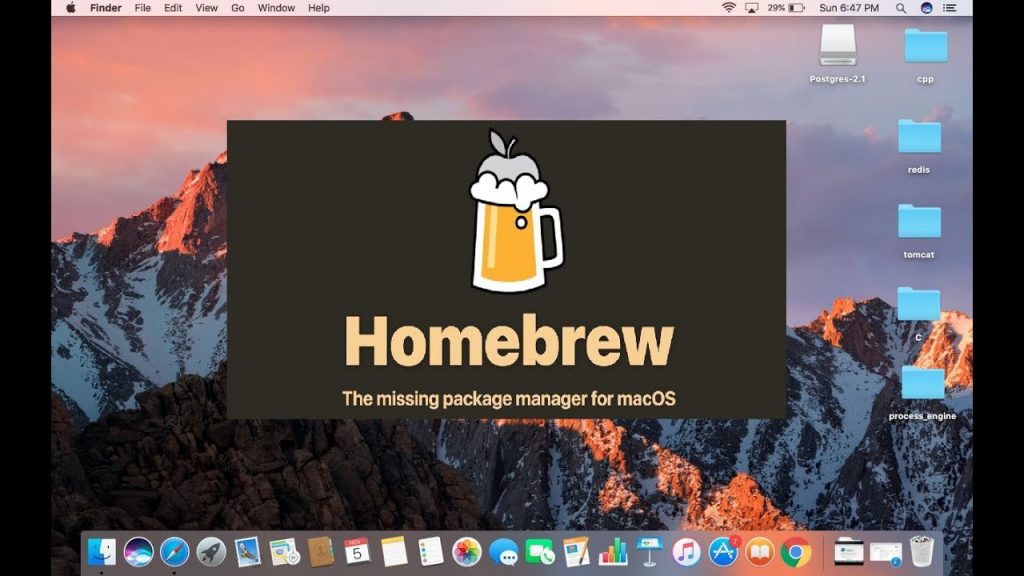

If you’re looking for a graphical tool to administer your databases, there are many options available. You can install MySQL through Homebrew or download a binary distribution ( ): brew install mysqlįor PostgreSQL, both a homebrew package and a binary distribution are available as well ( ): brew install postgresql If you do not have a separate database server, install your favorite (MySQL or PostgreSQL) DBMS now. You will need a database to run OpenProject.

Option 2 ruby-install and chruby brew install chruby ruby-installĮcho "source /usr/local/opt/chruby/share/chruby/chruby.sh" > ~/.bashrcĮcho "source /usr/local/opt/chruby/share/chruby/auto.sh" > ~/.bashrc
#HOMEBREW MAC BREW DOCTOR HOW TO#
If you need help on how to install rvm, have a look at their homepage. In this guide we will demonstrate setting up a project with both RVM ( ) and chruby (with ruby-install). Typically, Ruby is installed in the users $HOME directory. Install the memcached cache server (optional but recommended for production environments):īrew install memcached Install Ruby Ruby version managersĪ ruby version manager lets you deploy and use different Ruby versions. Install dependencies: brew install git curlĪlso install the following dependencies if you want to enable OpenProject to generate images (recommended but optional): brew install imagemagick graphviz Run Brew doctor to ensure everything is properly installed: brew doctor If Homebrew is already installed on your system, just run ‘brew update’ followed by ‘brew upgrade’ to upgrade your packages. Check the Homebrew website for detailed information ( ). The script will guide you through the steps necessary to install Homebrew. Then install Homebrew: ruby -e "$(curl -fsSL )" Install XCode from the App Store.Īfter the installation go to XCode Preferences -> Downloads and install the command line tools. You will need the XCode command line tools to be able to compile packages with Homebrew. Install XCode, Homebrew and package dependencies Installation on 10.5 is possible, but may require some extra steps. We will also assume MacOS 10.6 or higher in this guide. As an alternative, you’re of course free to use MacPorts or Fink if you prefer. Check it out if you don’t have it installed on your machine yet, it’s highly recommended. In this guide we will use Homebrew as a packager manager ( ).
#HOMEBREW MAC BREW DOCTOR FOR MAC OS#
While being targeted at Linux, it should work identically for Mac OS X. Please use the manual installation guide at the following URL:


 0 kommentar(er)
0 kommentar(er)
